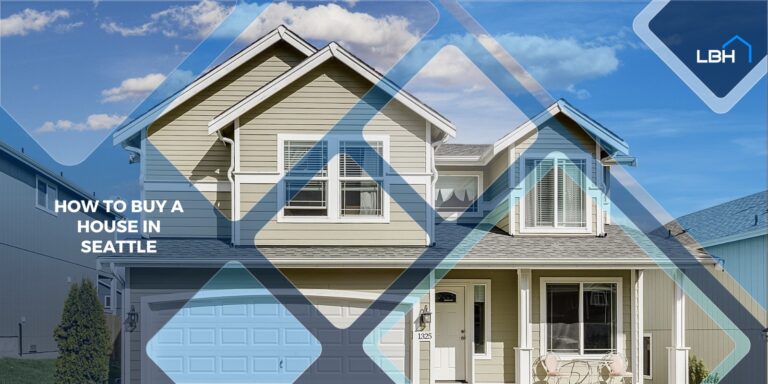Every home has a history. In the case of homes in the U.S., this history may date back thousands of years. Several cultures passing through the country have shaped the various types of houses in America.
Until the 20th century, early European settlers, including France and Spain, influenced architectural styles in North America. Over time, house styles evolved and became more complex to accommodate the country’s growing population. Now, one can find single-family home styles, duplexes, mobile homes, and townhouses across the country’s landscape.
Any homebuyer looking for their dream home should learn and understand the different types of houses that dot the American horizon. Understanding the types of homes and styles will help you appreciate their design nuances and history. It will also drive key decorative decisions and help you draw up focused plans for renovation or refurbishment.
Understanding the elements of various types of homes can also help you select the right one for your family and your lifestyle. Many factors influence the decision of a home purchase. This includes the location, size, house layout, maintenance costs, and budget.
There is no better way to review these aspects than by acquainting yourself with house structures and styles. America has native house styles like craftsman, modern farmhouse style, and Cape Cod. Modern styles include contemporary-style residences, prefab homes, and mobile homes.
In this guide, we round up a list of 25 popular types of houses in the U.S.
1.Ranch Style
Ranch-style homes are a typical architectural style seen on the East Coast and in the Midwest. They paint a picture of sweet suburbia with their modest, single-floor layouts. Ranch-style houses were popular during the 1950s and 1960s post-war building boom. However, the first of these houses appeared in the 1930s.
Ranch-style homes are a picture of functional architecture. They’re suited to people with a modest budget. They consist of single-floor plans and low-pitched roofs. Their floor plans are commonly “L” or “U” shaped. Despite their simplicity and formulaic design, they have features like an attached garage and a patio deck.
The great thing about these homes is that you can extend or upgrade them to your liking.
Even today, ranch-style homes are among the most popular property types of houses in the country.
2.Colonial
Colonial-style houses grace the hardy landscape of the northeastern United States. They date from the 1600s when many colonies settled along the East Coast. Their most striking feature is their rectangular shape, broken up by symmetrical windows on either side. They usually consist of two to three stories.
Colonial homes are charming architectural gems because of their symmetry and rich history. They also feature decorative allures like ornate doorways and elegant brick exteriors. The interiors of colonial-style homes are full of old-world elegance, with fireplaces, exquisite trimmings, and wainscoting.
Despite their intricate features, these dwellings were among the least expensive. Developing communities across the country adapted them to various styles. During your home search, you might come across versions of colonial-style homes that reflect these sub-styles.
3.Victorian
Victorian-style homes derive their name from the remarkable royal that ruled Britain, Queen Victoria. These homes rose to prominence in the 19th century.
Victorian mansions today have the same spellbinding power that they did in the past. They have an eye-catching steep-pitched roof, as well as a range of ornamentations, including:
- Cutaway bay windows and dormer windows
- Ornate woodwork
- Partial or full-width front porch
- Gabled roofs
- Towers and turrets
Aside from their romantic design and extravagance, their asymmetrical structure makes them unique.
4.Craftsman
Somewhere in the early 1900s, the Arts and Crafts movement made inroads, inspiring an architectural style that is still popular. The Craftsman house style was an antithesis to the over-romanticism of Victorian homes that reigned supreme at the time.
However, they aren’t as simplistic as they seem. Craftsman-style homes borrow elements from various house styles, but their most dominant feature is their ornate woodwork. This woodwork extends to the interiors, featuring elements like built-in shelving.
They exude genuine American charm with their low-pitched roofs and overhanging eaves. Some of their most prominent features include:
- Exposed decorative beams
- Roof rafters
- Natural woodwork-inspired tones
- Covered porch
Craftsman homes have attic space that has the potential for renovations and upgrades.
5.Modern/Contemporary
Brimming with modernist features that came to the fore in post-war America, modern/contemporary homes leave behind the excessive designs of the past. Instead of adornment, they emphasize sleek lines and minimalist forms.
Modern homes date back to the 20th century. Their open layout structure, minimalist appearance, and clean outlines make them easily identifiable. They make use of glass, chrome, and contrasting textures. Their key features include:
- Low-hanging/flat roofs
- Wide windows without visual barriers
- Fluid outdoor-indoor spaces
- Geometric lines
- Open floor plans
6.Log
Most people associate log cabins with vacation nostalgia. They’re a fixture in America’s rustic landscape. But the reality is that besides frontier vacation homes, they also serve as primary residences.
The origins of log cabins lie in Scandinavian design. During the 1600s, Scandinavian settlers introduced this design into the American landscape.
One of the oldest types of home designs, log cabins can be as basic or elaborate in their construction. They employ a technique that involves stacking logs horizontally by interlocking their corners. Log cabin construction uses various types of timber, from Douglas fir to spruce or pine.
A key advantage of log cabins is their ability to regulate temperature. The wood used in log cabin construction has a high R-value. This means it insulates the interiors effectively, keeping the house cool in the summer and warm in the winter. Its energy-efficient properties make it a top choice for people buying a home.
7.Cottage
Cottage-style homes are cute houses you might spot along tree-lined avenues and suburban streets in the country. They’re small, traditional, and cozy. Their average size is less than 1,200 square feet. This is about half the median home size in the U.S., making them a suitable type of dwelling for small families.
Their single-story structure and simple layout make them affordable and attractive to buyers interested in a starter home.
Cottage homes have been popular since the 1920s and 1930s, when they were the most common. Despite their widespread use, their construction method is not indigenous to the United States.
They drew inspiration from the architecture of the English countryside. Their quaint structure, made of stone, wood, or brick, makes them popular among American homebuyers. Their prominent features include:
- Thatched roof
- Cross gables
- Storybook-like casement windows
- Arched doorways
- Asymmetrical façade
- Open floor plan
8.Modern Farmhouse Style
Farmhouse-style homes exude warmth, character, and a distinct country-living vibe. These homes have a timeless appeal since they are made from natural materials such as stone or wood. They’re a traditional house, and equally practical, making them popular across the country.
The asymmetrical exterior of farmhouse homes is one of their most recognizable features. They have wide porches, gabled roofs, and small windows.
Because of their location on an estate or farmland, this style of house has a rural appeal. They’re common to the southern United States and feature regional variations of this home, such as the farmhouse-style houses with a wrap-around porch.
9.Prefab
In the past few decades, various types of modern houses have sprung up in the country’s corners. The prefab home is among them. Prefab is short for pre-fabricated. It involves a modular type of construction that builds various house parts in factories. When they are ready, the builders assemble them on-site.
Prefab homes are modern in that they allow a high degree of customization. Owners can select their chosen layout, material, and floor plan. Prefab homes have a fluid design that mimics the style of modern/contemporary home styles. They’re more sustainable than other house styles, thanks to reduced construction time, low environmental impact, and lower waste production.
According to an industry report, the prefab home manufacturing sector in the U.S. grew by 0.3% annually between 2017 and 2022.
10.Cape Cod
Cape Cod houses are indigenous to the Cape Cod peninsula in Massachusetts. They’re considered the quintessential American home. The first Cape Cod home dates back to the 1700s. The design reemerged in the 20th century, bringing newer additions like attic lofts and dormer windows.
While they resemble British or American colonial houses, Cape Cod homes have unique features like:
- Steep roof
- Shingle exteriors
- Hardwood floors
- Windows with multiple panes
- Central fireplaces
Most Cape Cod homes are single-story structures with unfurnished upper levels. If you’re seeking to buy a Cape Cod style home, you should budget for upper-floor furnishings.
11.Tudor
Tudor-style homes evoke storybook imagery associated with the English countryside, and rightly so. Tudor architecture was originally part of the 16th-century medieval English landscape.
Today, American Tudor homes reflect modern adjustments based on the original style. Even so, they have an undeniable historical charm that became popular in the early 1900s America.
Tudor-style homes feature stone or brick construction. They don’t have a consistent size. Tiny homes with a Tudor-style construction resemble quaint cottage-style constructions. Larger Tudor homes seem almost manor-like in their appearance. Regardless of the size, Tudor-style homes have these features:
- Pitched gable roofs
- Chimneys
- Half-timbering with stucco walls
- Diamond-shaped or casement windows
- Asymmetrical exterior
12.Mediterranean
You may have spotted sprawling, luxurious homes awash in white, tucked away in California’s elite enclaves. With their stucco facade and European ambiance, they radiate a classic Hollywood vibe.
These Mediterranean-style homes thrive in the warm climes of California and Arizona. They became popular in the 1920s and 1930s and still dominate the landscape.
Mediterranean homes borrow several elements from Spanish and Italian architectural styles. In contrast to the steep-pitched roof homes of the East Coast, Mediterranean homes have a flatter structure. They feature an adobe or stucco façade. Some Mediterranean homes may feature an open central courtyard with a garden space. Key features of Mediterranean homes include:
- Decorative flooring
- Grillwork
- Arches
- Red-tile roofs
- Stucco exterior
13.French Country
In the 18th century, French country house-building techniques became popular in the United States. They thrived until the Louisiana Purchase took effect in the latter half of the century. One can spot these French architectural influences around the Mississippi and Great Lakes valleys and New Orleans.
French country homes are mainly one story structures modeled after French chateaus. They have half-timbered frames and neutral stucco walls. They also have steeply pitched side-gabled or hipped roofs. Due to their stone, clay, or brick construction, they exude a storybook vibe with an enchanting curb appeal.
14.Spanish Colonial
Native to warm climes and sun-soaked cities like Florida and California, Spanish colonial homes are rustic and elegant. These homes blend form and function to create a winning architectural style developed by Spanish colonists.
The use of natural textures and materials is common in Spanish colonial construction. You may find homes made with terracotta or adobe walls. Most of the façade reflects a light, textured feel, contrasted by brown or red roofing. Woodwork elements, arched doorways, and covered porches lend these homes warmth and a timeless quality.
15.Greek Revival
Between the 1830s and the 1860s, Roman and Greek elements had a widespread impact in America. On the verge of establishing a new republic, America looked to ancient Greece for civic virtues and nationalistic ideas. Many government buildings, banking institutions, and religious sites along the East Coast adopted this characteristic style.
Greek Revival-style homes and residential buildings have an easy-to-identify, distinctive design. Ornate, elegant, and large Greek Revival buildings have an austere and institutional appearance. They feature geometric shapes and defining Greek columns. Their entryways and porches are wide, with decorative trim around the doorways and windows.
16.Italianate
The Italianate architecture style is reminiscent of the majestic homes dotting the Tuscan countryside. Their classic architecture style has influences from 16th-century Renaissance architecture. When its popularity peaked in the late 1800s, this style was common across a few East Coast cities.
Asymmetrical forms in clapboard or brick are typical of Italianate architecture. They’re tall and slender, with two to three stories. They have lengthy bay windows with ornamental trim because of their tall structure. Its other features include:
- Cupolas or belvederes
- Decorative porches
- Cast iron decorative motifs
- Overhanging eaves
17.Gothic Revival
The Gothic Revival home design is one of the most stunning in the world, inspired by the cathedrals and churches that dot Medieval Europe. In the mid-19th century, their spectacular architecture inspired a slew of American mansions.
Gothic Revival homes don’t necessarily display the over-dramatized elements of European cathedrals they emulate. Some Gothic homes borrow simple elements, such as steep roof pitches, wood trim work, and front-facing gables. They typically feature a stone façade that gives them a stately look. They may also feature chimneys and arched doorways or windows.
18.Queen Anne
Almost castle-like in appearance, Queen Anne-style homes have a heritage quality and charm. They feature ornate and decorative details and an asymmetrical exterior that draws attention.
This elaborate Victorian-era home style came to life in the 1800s. Queen Anne houses are as ornate and detailed inside as they are on the outside. They feature wooden ornamentation and intricate trims. You can identify a Queen Anne-style home with these features:
- Wrap-around porch with trim
- Decorative spindles
- Large windows with stained glass
- Half-timbered roofs
- Polygonal towers and turrets
- Brightly colored exterior walls with decorative texture
19.Townhouse
Townhouses were common fixtures in city dwellings but have also seeped into suburbs and smaller towns. Their most telling feature is their multiple stories structure, which shares walls with adjacent homes. Despite their city-style vertical orientation, they have their own entrance. Depending on the area, they may also have a front lawn or a small backyard. They may vary from tiny homes to bigger accommodations.
The origin of the modest townhouse dates back to the 17th century. They were built to accommodate a fast-expanding urban population in modern cities like Paris and London. Come the 20th century, they became an iconic fixture in New York, Boston, and other East Coast cities. Despite being an independent house style, townhouses draw inspiration from other revivalist designs.
20.Art Deco
The Art Deco architectural style took off in the Roaring ‘20s and has influenced various parts of the world. This was a time when designers felt the need to leave behind revivalist designs and come up with something unusual.
Rightly so, the Art Deco house style balances minimalist and maximalist ideas. It is practical yet aesthetic. It features curved, geometric lines with ornamentation. Its building technique used stucco, glass, terracotta, and even aluminum.
Motifs are central to any Art Deco creation. They consist of sunrise, ziggurat, chevron, and floral patterns. Today, the Art Deco style is one of the most recognizable building styles in the world.
21.Mid-Century Modern
This classic house style is the representation of true Americana. This iconic style first emerged between 1945 and 1969. It has recently reemerged as a compelling aesthetic favored by millennial homebuyers.
With their low and wide orientation, they drive a minimalist shift in architecture. By combining indoor and outdoor spaces, this home style honors the surrounding natural elements. Its design is asymmetrical, with clean lines and a contemporary feel.
They also reflect ideals associated with family, nature, and individuality. Their interiors are often nature-inspired, and their vast open spaces showcase simplicity.
22.Prairie
Contrary to their names, prairie-style homes aren’t as rustic and traditional as they appear. They celebrate a modern shift in American architecture, pioneered by famed architect Frank Lloyd Wright. Prairie-style homes are known for their functional and fluid designs devoid of ornamentation.
They’re low-lying, flat, and inspired by the aesthetics of their surrounding landscape. One can commonly find them in Chicago and other Midwestern areas. The suburb of Oak Park in Chicago has the largest concentration of prairie-style homes. They blend well with the low-lying Midwestern landscape and, in Wright’s words, “are married to the ground.”
23.Shotgun
Shotgun-style dwellings are narrow and rectangular, making them appear almost dollhouse-like. Originally, these homes had flat roofs with little ornamentation and uncovered porches. At the turn of the 19th Century, they sprung up with more ornamentation, including pitched roofs and covered porches. This increased their curb appeal.
The narrow orientation and layout of shotgun homes suggest that a bullet shot from the front door could exit the back door without striking anything. While this explains the name of this house style, the true origins of shotgun homes trace back to Haiti.
Enslaved West Africans first built this type of house design in Haiti. When they immigrated to Louisiana, this native design influenced residential architecture in cities like New Orleans. Recently, there has been a renewed interest in preserving these homes.
24.Saltbox House Styles
Saltbox homes are most common in the New England landscape. The name comes from ancient wooden salt storage barrels popular during the colonial era.
Because of their modest and classic design, saltbox homes offer a great heritage appeal. You’ll find most of these homes tucked away in East Coast states, including Maine, Rhode Island, and Connecticut.
Their most defining characteristic is their flat-walled façade with an irregular slanted roofline. This uneven roofline suggests an unusual interior layout. Saltbox homes typically feature two stories where the roofline rises. In the back, where the roofline slopes down, there’s one story.
The asymmetrical roofline also serves a practical purpose. During harsh New England winters, the sloping roof encourages snow to melt faster and slide off, preserving insulation.
25.A-Frame
A-frame homes are reminiscent of faraway Alpine chalets and misty cabin retreats. They’re a specialized type of house style most notable for their A-shaped exterior. Their steep triangular exterior sets them apart from other popular house styles.
Long windows punctuate the front façade of these homes. These windows are built to provide scenic views from the home, usually of a mountain or valley. The interior layout is open and airy, flooded with plenty of natural light that streams in through the windows.
A-frame houses are popular in mountainous regions that get a lot of snow or rain. The steeply sloping roof design helps it slough off accumulated snow. As such, A-frame homes serve both an aesthetic and practical purpose.
Additional Tips for Choosing a House Type
You’ll encounter different kinds of houses in the U.S. market, but the right decision rests on your preferences and budget. Besides preferences, you’ll need to rely on a list of non-negotiable elements you want in a home. This could range from having a patio deck to having a certain number of bedrooms.
You should also examine the size and lifestyle of your family. If you have a growing family, you should consider purchasing a home with extra bedrooms. In this scenario, having a yard may also be beneficial.
If you have elderly parents, you should ensure the design of your home is age-friendly. Larger families, of course, would necessitate additional bedrooms, bathrooms, and more living space.
Location is another important factor that should be at the top of your priorities. This will depend on your lifestyle and finances. Before deciding on a house in a specific neighborhood, conduct thorough research. Review factors such as crime rates and employment options.
If you have children, you will also want to confirm that there is a nearby school and that the community is family-friendly.
Finding a home is a long-term commitment. If you’re feeling lost or confused in your home-buying process, it’s a good idea to seek advice from an expert. A seasoned realtor can help you analyze crucial aspects influencing your selection and find the best fit for your family.
FAQ
What are the most popular types of house designs in the United States?
In 2022, single-family homes accounted for about 79% of all home purchases in the country. Besides these, ranch, craftsman, cottage, colonial, and contemporary homes are among the most popular house styles.
How do I choose the right type of house for my needs?
The right type of house will depend on your style, design preferences, and budget. You should also consider the floor plan, location, facilities, repair expenses, and family lifestyle. Using a real estate agent or a property website will help you narrow down your search.
What are some common mistakes to avoid when buying a house?
Many people buy a home on impulse, without considering aspects like home inspection, price negotiation, and hidden costs. Some may also exceed their budget or refuse to hire an agent.
What are some tips for negotiating the price of a house?
Many people underestimate the power of buying through an agent. Agents are skilled negotiators who understand the intricacies of the home market. Communicating your house price through them can yield successful results.
If negotiating on your own, ensure you study property market conditions and present realistic numbers to the seller. A house inspection can also reveal specific problems and repair needs you can use as a bargaining chip.
Key Takeaways
The U.S. has an ever changing housing market. There are different styles of homes to choose from, which poses a challenge for any homebuyer. It’s crucial to consider not only personal preferences but also practical factors.
Each factor, from family size to geography, needs careful consideration. Seeking expert advice from a property agent can help you navigate the complexities of the real estate market and find the ideal home for your family and lifestyle.












